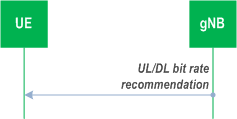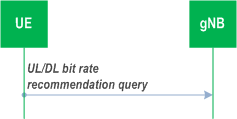Content for TS 38.300 Word version: 18.0.0
1…
4…
4.7…
5…
5.3…
5.4…
6…
6.2…
6.6…
7…
8…
9…
9.2.2…
9.2.2.5…
9.2.3…
9.2.3.2…
9.2.3.3…
9.2.4…
9.2.6…
9.3…
10…
11…
15…
15.5…
16…
16.2…
16.3…
16.4…
16.8…
16.9…
16.10…
16.12…
16.12.5…
16.12.6…
16.12.6.3
16.12.7
16.13…
16.14…
16.15…
16.18…
16.19…
16.21…
16.21.3…
17…
18…
19
20…
21…
A…
B…
C…
G…
16.2 IMS Voice
16.2.0 Support for IMS voice
16.2.1 Support for MMTEL IMS voice and video enhancements
16.2.1.1 RAN-assisted codec adaptation
16.2.1.2 MMTEL voice quality/coverage enhancements
...
...
16.2 IMS Voice p. 149
16.2.0 Support for IMS voice p. 149
For IMS voice support in NG-RAN, the following is assumed:
- Network ability to support IMS voice sessions, i.e. ability to support QoS flows with 5QI for voice and IMS signalling (see clause 12 and TS 23.501), or through EPC System fallback;
- UE capability to support "IMS voice over PS", see TS 24.501.
16.2.1 Support for MMTEL IMS voice and video enhancements p. 149
16.2.1.1 RAN-assisted codec adaptation p. 149
RAN-assisted codec adaptation provides a means for the gNB to send codec adaptation indication with recommended bit rate to assist the UE to select or adapt to a codec rate for MMTEL voice or MMTEL video. The RAN-assisted codec adaptation mechanism supports the uplink/downlink bit rate increase or decrease. For a bearer associated with configuration of MBR greater than GBR, the recommended uplink/downlink bit rate is within boundaries set by the MBR and GBR of the concerned bearer.
For uplink or downlink bit rate adaptation, gNB may send a recommended bit rate to the UE to inform the UE on the currently recommended transport bit rate on the local uplink or downlink, which the UE may use in combination with other information to adapt the bit rate, e.g. the UE may send a bit rate request to the peer UE via application layer messages as specified in TS 26.114, which the peer UE may use in combination with other information to adapt the codec bit rate. The recommended bit rate is in kbps at the physical layer at the time when the decision is made.
The recommended bit rate for UL and DL is conveyed as a MAC Control Element (CE) from the gNB to the UE as outlined in Figure 16.2.1.1-1.

Based on the recommended bit rate from the gNB, a UE may initiate an end-to-end bit rate adaptation with its peer (UE or MGW). The UE may also send a query message to its local gNB to check if a bit rate recommended by its peer can be provided by the gNB. The UE is not expected to go beyond the recommended bit rate from the gNB.
The recommended bit rate query message is conveyed as a MAC CE from the UE to the gNB as outlined in Figure 16.2.1.1-2.

A prohibit timer can be configured per logical channel by the network to limit UEs sending frequent query MAC CEs. Independent prohibit timers are used for each direction (uplink and downlink) to prohibit the UE from retransmitting exactly the same query MAC CE to the gNB during the configured time.
16.2.1.2 MMTEL voice quality/coverage enhancements p. 150
The air interface delay budget can be relaxed to increase the robustness of the transmission for coverage enhancement. Such relaxation may be achieved when a UE in good coverage indicates a preference to the gNB to reduce the local air interface delay by sending a DelayBudgetReport message to decrease the DRX cycle length, so that the E2E delay and jitter can be reduced. When the UE detects changes such as end-to-end MMTEL voice quality or local radio quality, the UE may inform the gNB its new preference by sending DelayBudgetReport messages with updated contents.